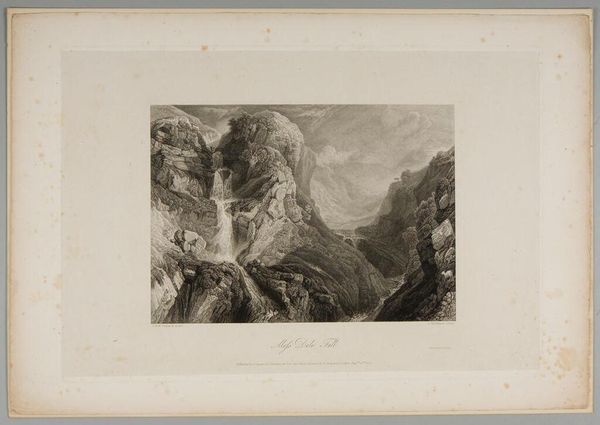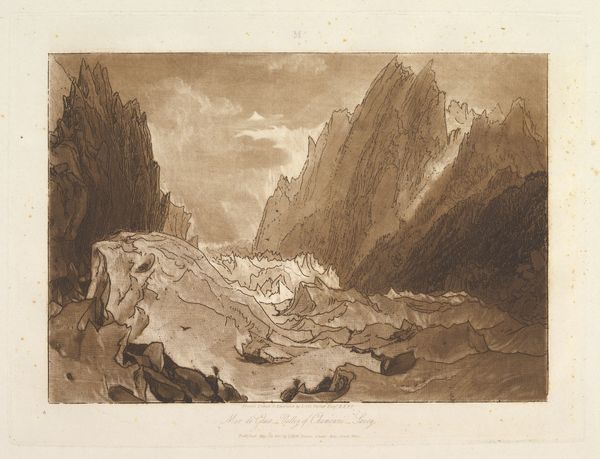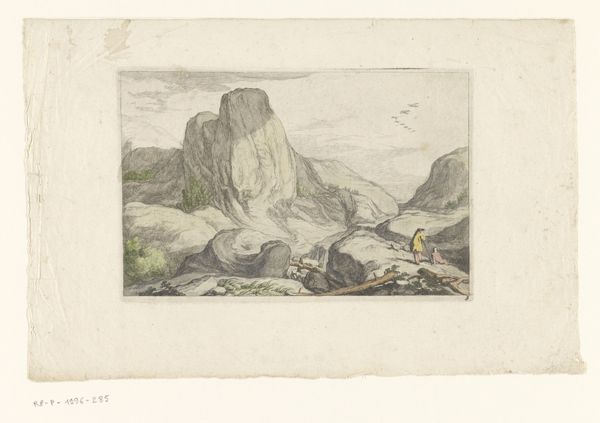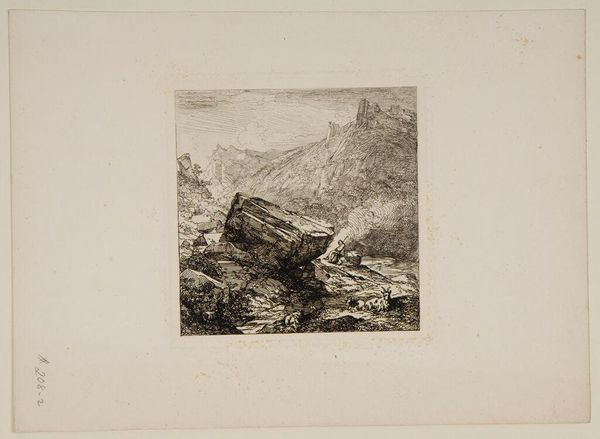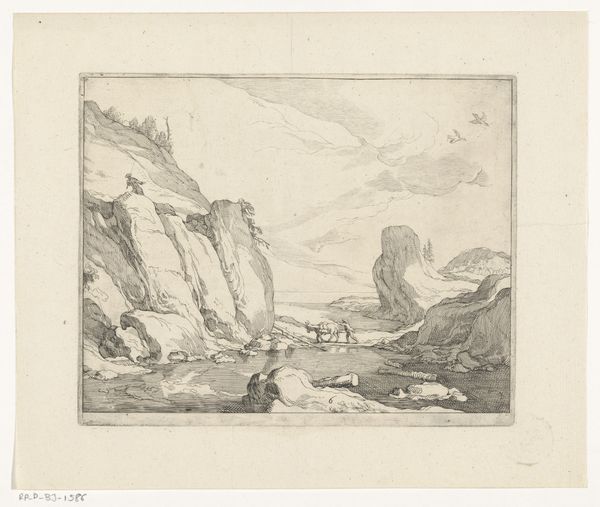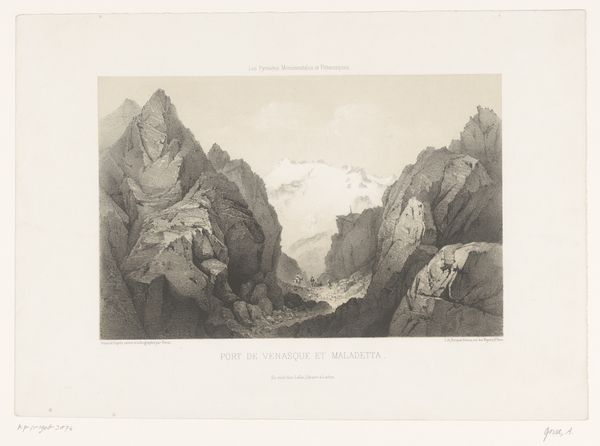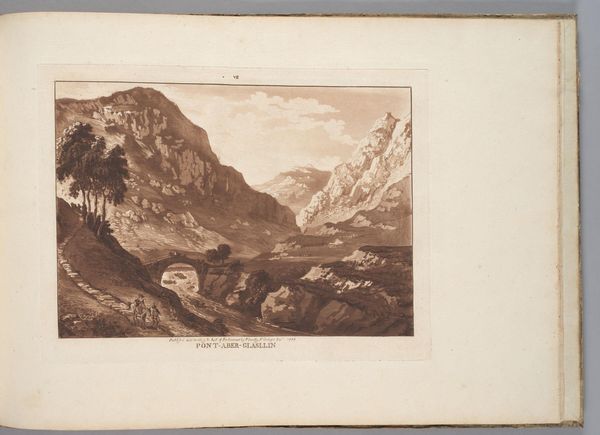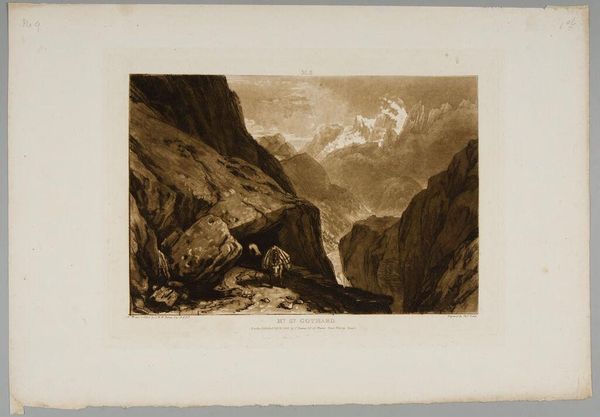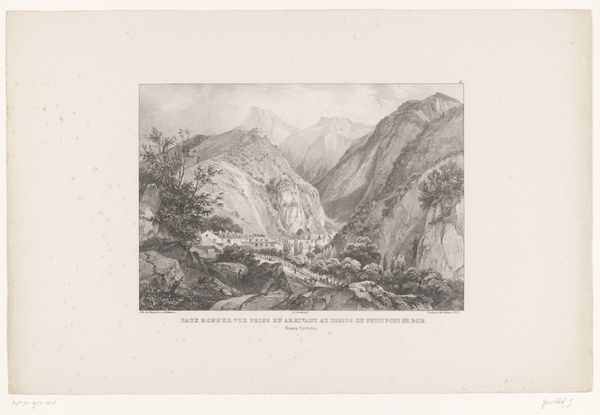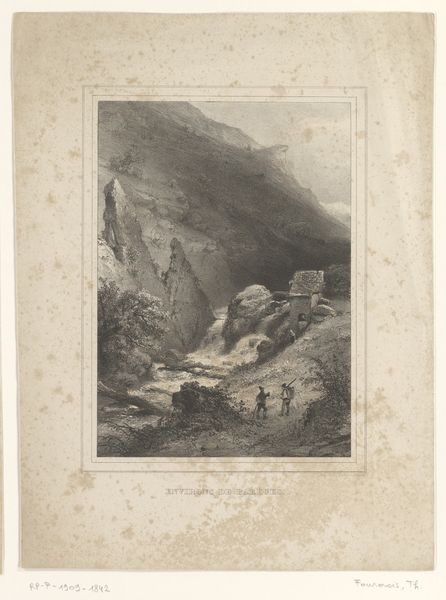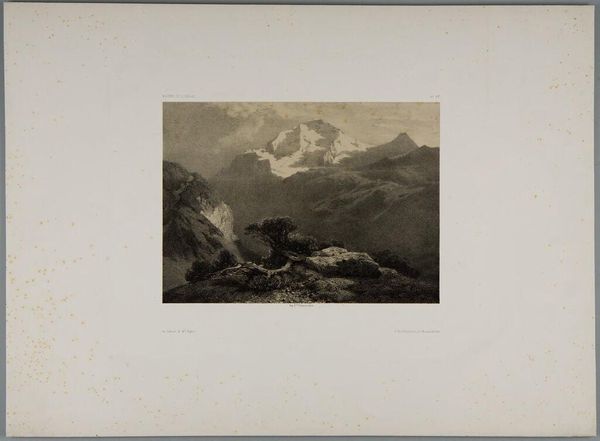
Mount Saint Gothard, plate 9 from Liber Studiorum Possibly 1808
0:00
0:00
drawing, print, etching, paper
#
drawing
# print
#
etching
#
landscape
#
paper
#
charcoal art
#
romanticism
#
history-painting
#
charcoal
#
watercolor
Dimensions: 177 × 260 mm (image); 207 × 292 mm (plate); 267 × 381 mm (sheet)
Copyright: Public Domain
Joseph Mallord William Turner made this etching and mezzotint, Mount Saint Gothard, as part of his series Liber Studiorum, a deliberate echo of Claude Lorrain’s Liber Veritatis. Here, Turner engages with the sublime in nature, a concept popular in the Romantic era. But rather than focusing on the overwhelming grandeur of the mountain, he highlights the human element. Look closely, and you'll see two figures with a pack animal dwarfed by the landscape, a reminder of the often-overlooked labor that went into traversing such terrains. Turner’s series was, in part, a commercial venture, intended to make high art accessible to a broader audience through printmaking. He was consciously positioning himself within a lineage of landscape artists, while also subtly critiquing the art market of his time. Understanding Turner’s work requires considering both his artistic intentions and the social and economic context in which he operated. Art historians consult a range of archival materials, from letters and exhibition reviews to economic data, to fully appreciate the complexities of his art and its place in history.
Comments
No comments
Be the first to comment and join the conversation on the ultimate creative platform.
